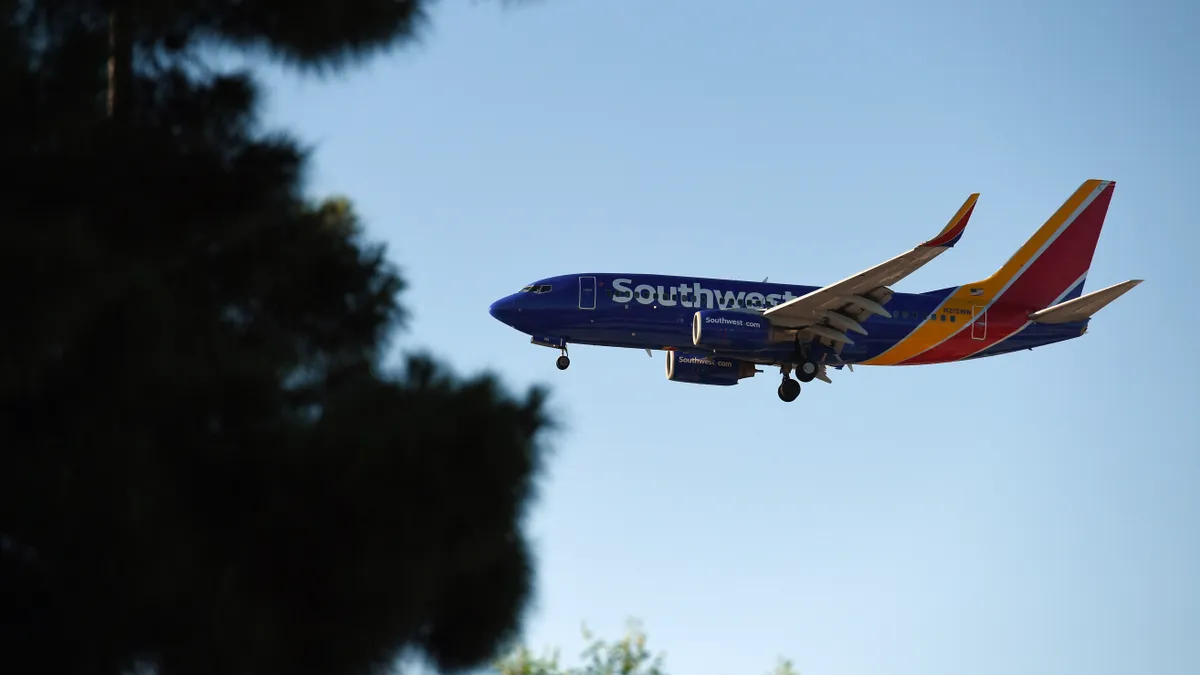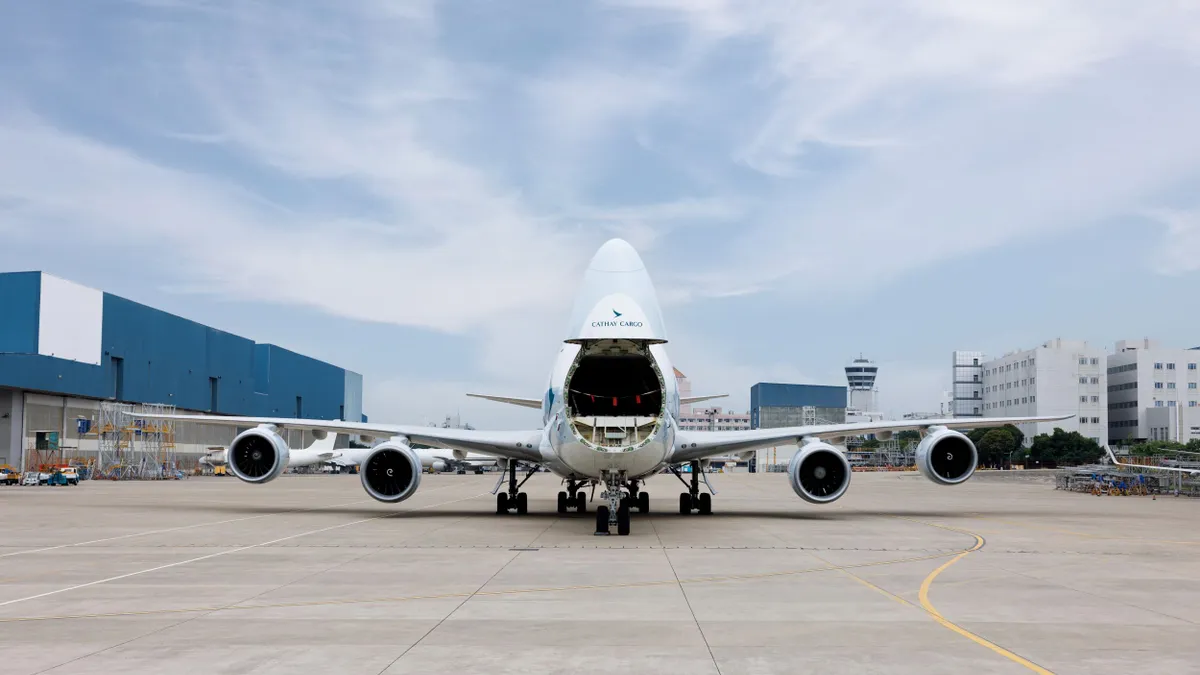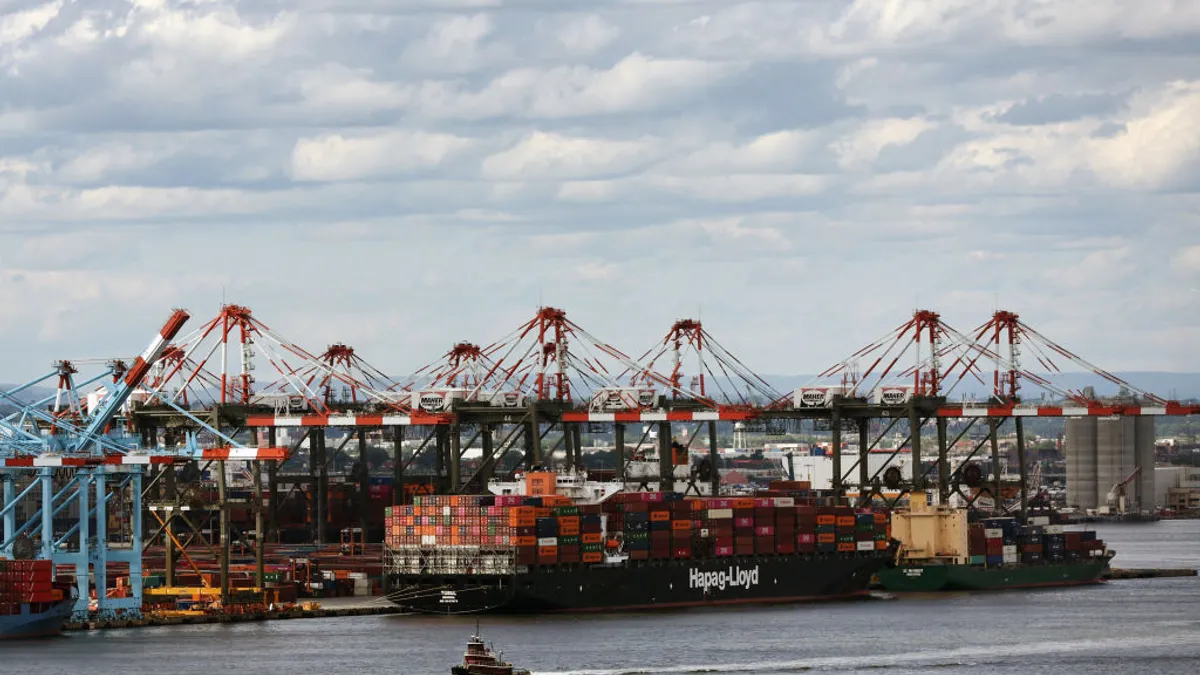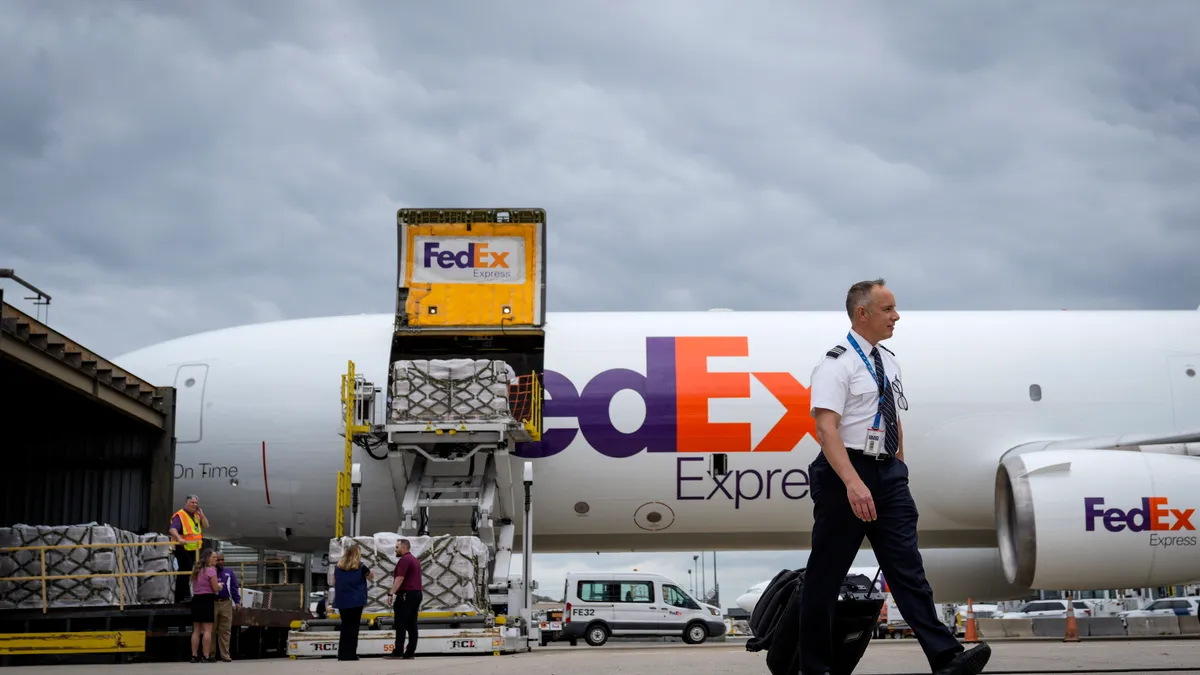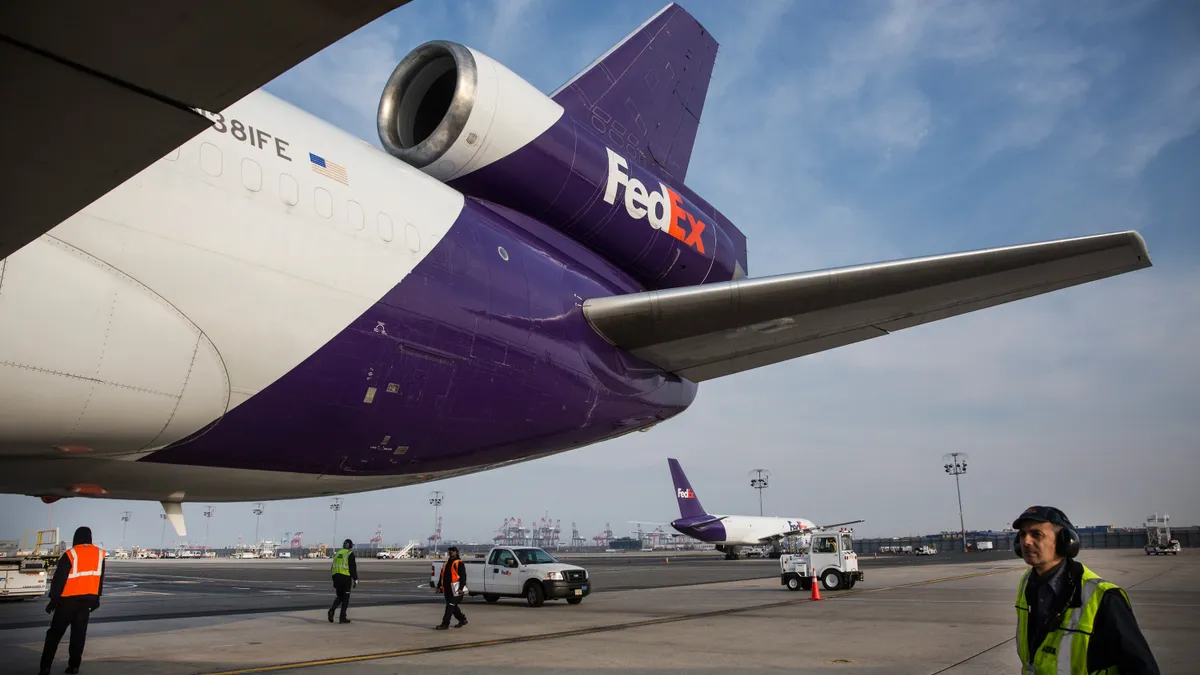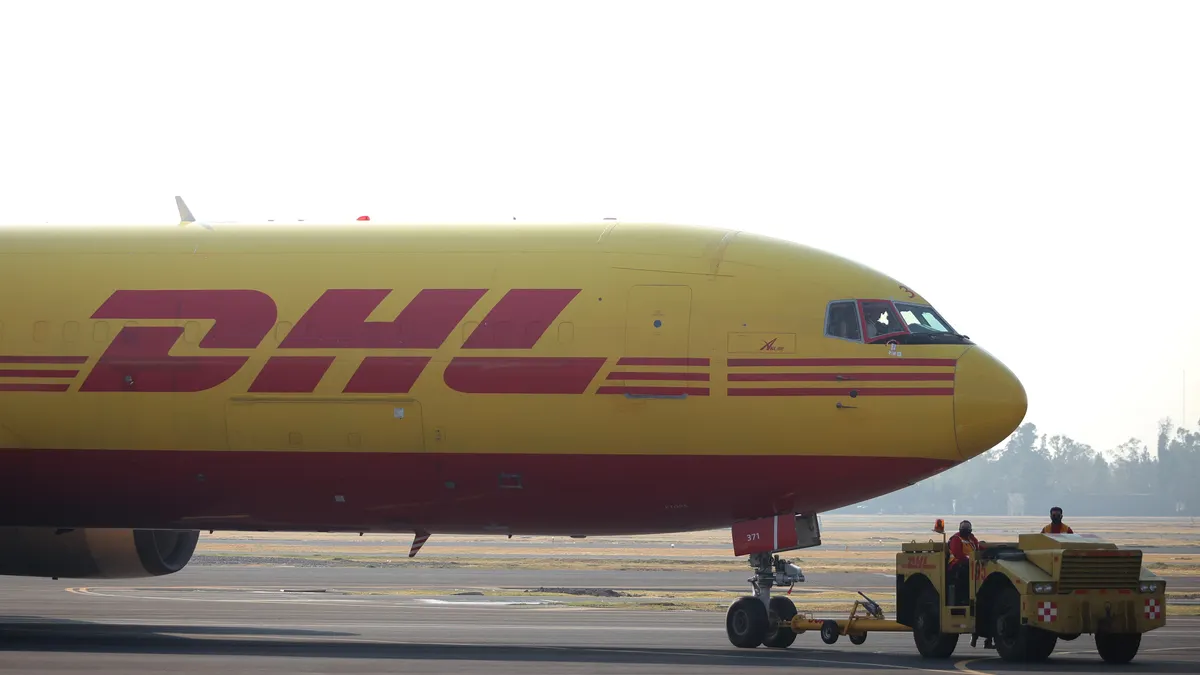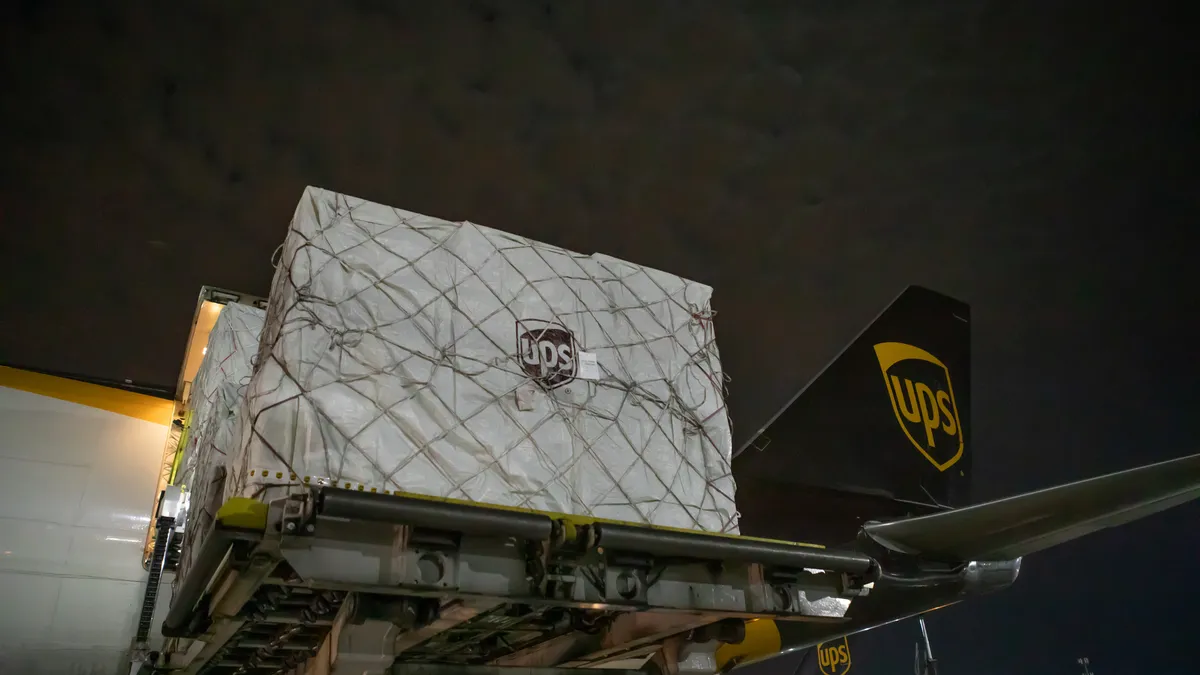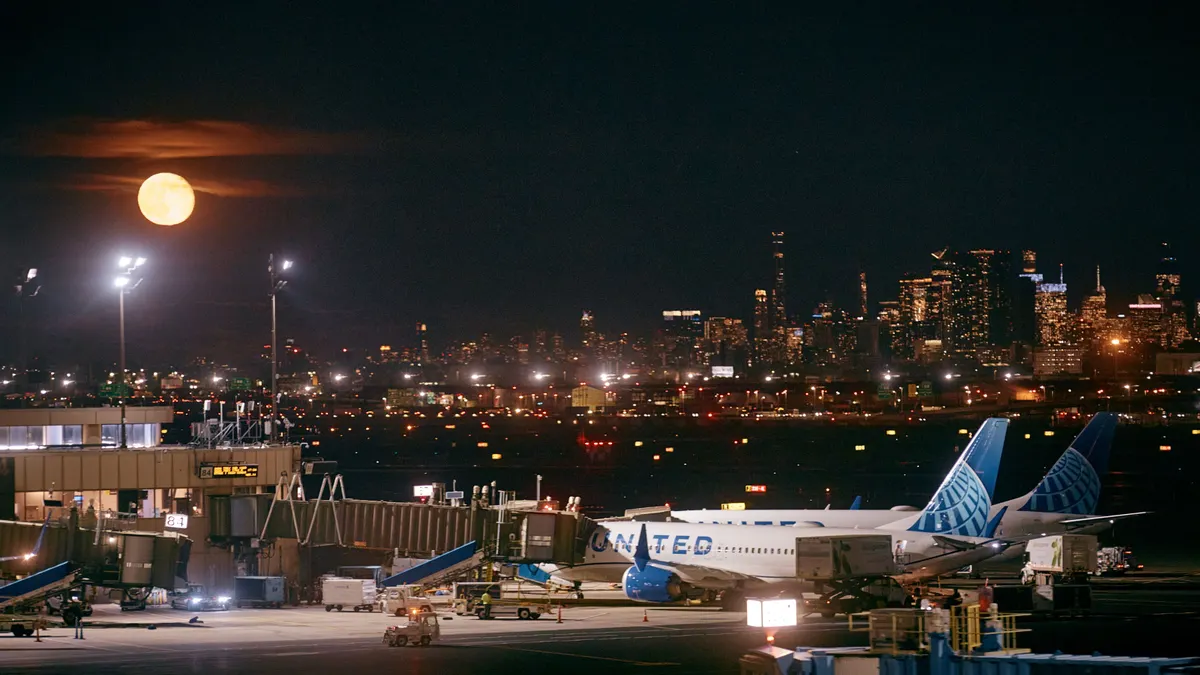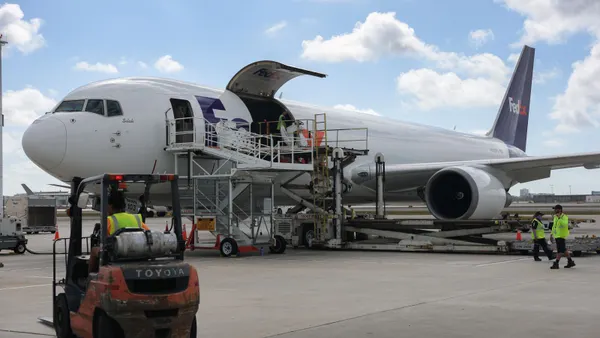Airlines and forwarders have rolled out big sustainable fuel commitments to meet growing pressure among shippers to lower their carbon footprints. But for some carriers, emissions continue to rise as supply chain challenges and production constraints make decarbonizing airfreight a tall order.
Shippers' interest in reducing their carbon footprints comes as consumer sentiment is shifting toward buying from companies placing sustainability at the forefront, said Heather Mueller, chief marketing and product officer at Breakthrough. The COVID-19 pandemic also provided an unexpected catalyst for shippers to ramp up their sustainability efforts.
"It's provided a moment to think, 'Well, everything has changed, so why not also lean into the change that's happening in sustainability as well?'" Mueller said.
While more companies have worked with carriers to reduce transportation emissions, technological and supply limitations of sustainable aviation fuel are causing turbulence in plans to make air cargo more sustainable. As DHL pursues its commitment to lower carbon emissions to fewer than 29 million metric tons by 2030, for example, it expects its greenhouse gas emissions to climb again this year after increasing 17% in 2021.
Air transportation providers are confident they can reach their ambitious sustainability goals — including net-zero emissions by 2050 — despite the headwinds. But how quickly they meet those goals will depend on how fast SAF supply can match demand, the speed at which aviation technology can progress and when manufacturers can deliver more fuel-efficient planes amid supply chain challenges.
"That's our commitment — it's not to sit around and blame certain things," DHL Express Americas CEO Mike Parra said of DHL's pursuit to reduce its carbon emissions to fewer than 29 million metric tons by 2030. "We're moving as fast as we can to get there."
Greater attention placed on transportation emissions
The aviation industry's decarbonization push will be necessary to keep shippers coming back to the emissions-intensive transportation mode.
Many companies have already addressed the "low-hanging fruit" of sustainability wins that also count as operational wins. These inlcude efficiently using truck capacity and optimizing transportation routes, Mueller said. This falls in line with the three "traditional" variables transportation practitioners consider: optimizing cost, capacity and service.
"As we move into 2022 and beyond, we're introducing a fourth variable, which is emissions intensity," Mueller said.
Airlines and forwarders have rolled out several programs of late for shippers to reduce their air cargo emissions. Delta Air Lines announced in January a program for cargo customers to contribute toward the airline's purchasing of sustainable aviation fuels (SAFs). Logistics providers Scan Global Logistics and Kuehne + Nagel have options for customers to request the use of SAF. Southwest Airlines, like other airlines, aims to replace 10% of its total jet fuel consumption with SAF by 2030.
"While 10% doesn't seem like a really big number, it's really important to understand that today, if you're talking about global demand for jet fuel, only 0.1% of that amount is available in the form of SAF today," said Stacy Malphurs, the airline's vice president of supply chain management and environmental sustainability.
Companies are also working with carriers more directly to reduce their supply chain emissions. DHL is helping Formula 1 meet its goal of a net-zero carbon footprint by 2030 by using more fuel-efficient aircraft to fly F1 equipment, fitting F1-dedicated trucks with GPS devices that monitor fuel consumption and using multimodal transport modes such as overland and ocean freight, according to a news release.
"We're aligned with their targets, which aligned with our targets," Parra said of F1.
Tight SAF supply, technology hurdles threaten progress
Despite growing interest in sustainability among both carriers and shippers, the air cargo industry still has a long way to go, especially in the critical space of SAF.
Airline fuel accounts for 61.3% of UPS' CO2 emissions, per the company's 2020 Global Reporting Initiative report. Similarly, air transportation factored into 70% of DHL's emissions last year, according to its annual report.
Mulphurs said SAF interest has grown among the airline's cargo customers and that it's the biggest tool it has to limit emissions. But only 50,000 metric tons of SAFs were used by the industry in 2020, according to an ICF report. The report estimates that up to 445 million metric tons of SAFs will be required for the aviation industry to achieve net-zero emissions by 2050.
Tight supply of SAF is already creating roadblocks for carriers' sustainability goals. DHL expects its emissions to rise again in 2022 "primarily because the limited availability and low percentage of sustainable fuels used in blends will not yet significantly reduce GHG emissions in air and ocean freight," the company said its annual report.
DHL projects emissions will keep climbing in 2022
Industry group Airlines for America is among those pushing for government incentives to encourage more SAF production.
"SAF is disadvantaged today versus renewable road fuels, and so we're really looking for some support and assistance from the federal government to be able to close that gap and incent producers to engage at scale," Mulphurs said.
But SAF in its current state won't solve the industry's emissions woes by itself. Mulphurs said achieving net-zero carbon emissions by 2050 is "dependent on technologies that don't exist today." SAFs, which use alternative feedstocks like cooking oils or waste, can't power planes alone. They are largely capped at a 50/50 blend with traditional jet fuel.
While interest in aircraft powered by methods outside of jet fuel like battery electric or hydrogen fuel cells is high, their uses in large jets are likely years away.
"The [hydrogen] fuel cells themselves have to take up so much physical space in a conceptual aircraft design that you wouldn't have as much room for customers," Mulphurs said. "So we've got constraints in the aircraft type that we need to operate in our business plan that will necessitate a really important place for SAF for the foreseeable future."
Airlines, shippers push for fuel efficiency in the interim
With widespread availabiltiy of SAF not expected any time soon, airlines are using more straightforward methods such as renewing fleets with more fuel-efficient aircraft to reduce emissions.
Delta sees fleet renewal as "our greatest opportunity to improve our emissions intensity," a spokesperson said via email. In 2022, around 80% of Delta's capital expenditures will go toward fleet renewal.
DHL is replacing aging planes with Boeing 777 freighters, which Boeing says reduces CO2 emissions by 17% versus older aircraft. But complicating DHL's efforts to renew its fleet of planes quickly is the fact that "there's none available," Parra said.
Supply chain challenges have led to shortages of critical aircraft parts needed to produce more fuel efficient planes. On a May earnings call, Boeing CFO Brian West said the company has experienced production disruptions due to supplier delays and less resource availability.
Despite the roadblocks, DHL said in its annual report that it remains optimistic it can reach its 2030 carbon emissions goal.
But shippers also have the power to reduce their emissions tied to transportation providers, whether carriers reach their goals or not. For that to happen, Mueller said sustainability goals have to be set at the highest levels of the organization. Additionally, companies should consider when they can convert shipments to transport modes with lower emissions, like from truckload to intermodal. Effective data collection to create sustainability KPIs is also critical.
"What's foundational here is understanding what your goals are as an organization, understanding what part of those goals transportation is responsible for, and then having the data to know what tradeoffs you are making," Mueller said.
Editor's note: This story was first published in our Logistics Weekly newsletter. Sign up here.



